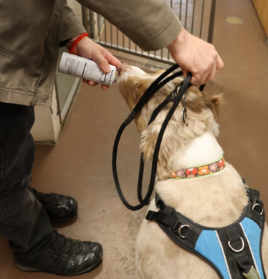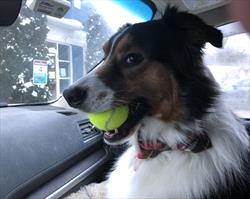Q: I have started using positive reinforcement training with my puppy. My trainer wants me to lure my puppy to sit, but I think it’s bribing. What’s the difference?
A: Lure and bribe are two different concepts in dog training, each with its own purpose and potential drawbacks. The presence of the reward, whether food or a toy, acts as a conditioned stimulus, which signals an upcoming cue for a specific behavior. Many trainers often avoid using lures because the animal may only respond when they see the reward, which may slow new learning. If the animal is shown the food or toy before performing the behavior, it is a bribe.
Luring is a technique used to teach an animal new behaviors by using a treat or toy to guide them into the desired position or action. For instance, to teach sit, you may move a treat over and behind their head to encourage them to sit, and then you give them that treat. While luring can help the animal understand and learn the new behavior, the goal is to reduce the reliance on treats over time as your dog learns the behavior.
Bribing your puppy during training is when you use treats to make them do something they already know, but it can cause problems. If you show the treat before you give the cue, your puppy might get confused and not learn properly. They might not understand what you want, be scared, unable to do it, or just wait for the treat. Bribing is not good for teaching them in the long run. It is better to use luring at first when teaching new things, but then you should start using words and hand signals more. Try not to bribe for things they already know, or they will always expect a treat. The goal is to have a puppy who can learn to respond to your cues without always needing a reward.




